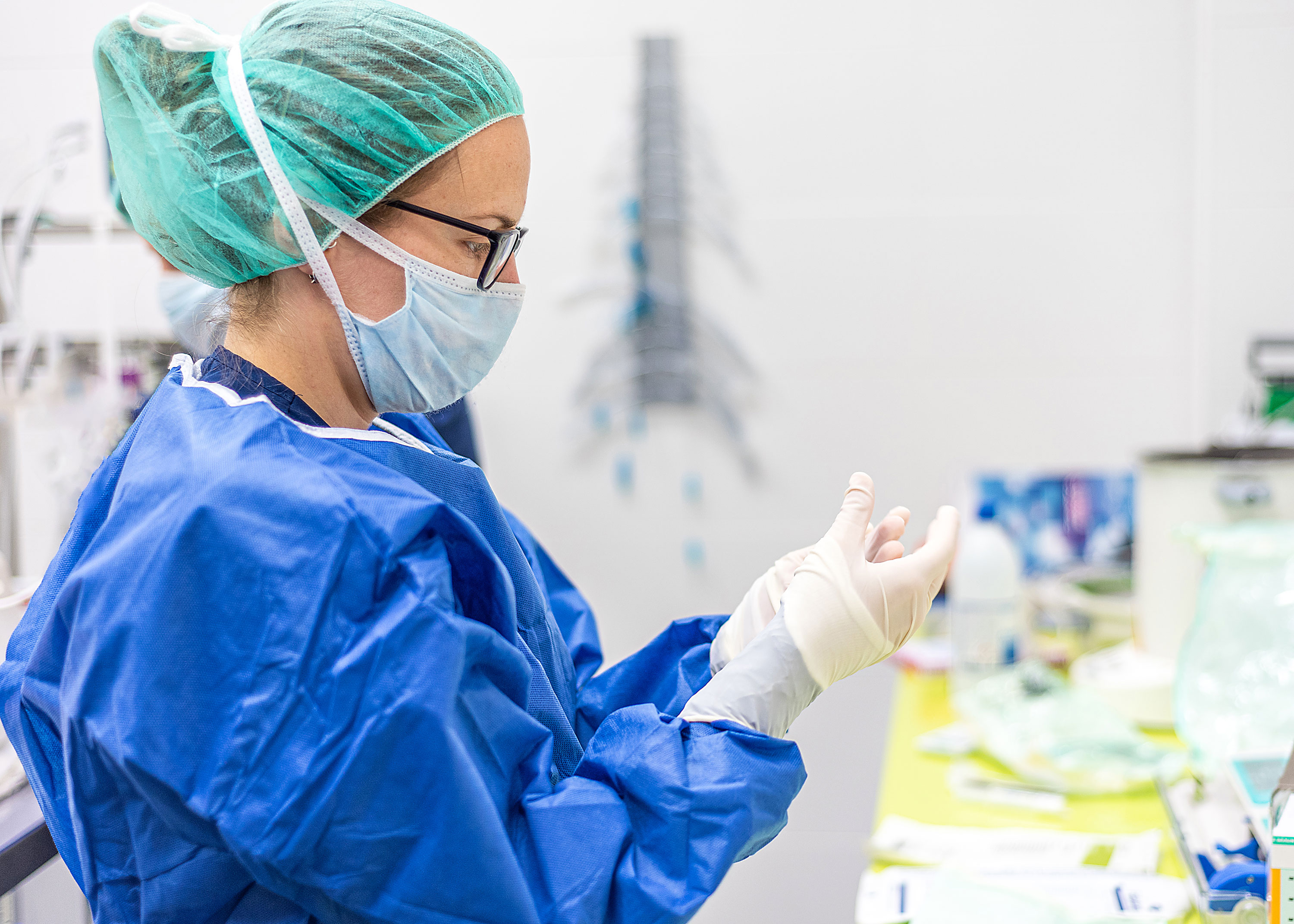
New University of Alberta research aims to make medical gowns and masks even safer for front-line health-care workers.
Using a one-year, $50,000 NSERC Alliance COVID-19 grant, textiles scientist Patricia Dolez is leading research on developing a textile treatment that would kill viruses—including COVID-19—on contact.
“We are developing something that will make these fabrics self-decontaminating,” said Dolez, assistant professor in the Faculty of Agricultural, Life & Environmental Sciences, who is working with fellow U of A academics Cagri Ayranci, associate professor in the Faculty of Engineering; Mark McDermott, professor in the Faculty of Science; and an industry partner, Logistik Unicorp.
Building on existing technology, the team is attempting to adapt a chemical used to disinfect swimming pools for use on textiles. The chemical is sensitive to light, so Dolez and her colleagues are working to develop it into a light-resistant compound that can be applied to fabrics. Protective garments could then be washed and reused, for more efficiency and sustainability.
“Imagine that you will not contaminate anyone else or even yourself when you touch your mask. When the bacteria or virus is killed when it touches the fabric, it can’t do any more damage.”
“This shows that even with small improvements to the technology, we can make personal protective equipment better than what’s currently available,” Dolez noted.
The compound would “break the chain of cross-contamination” she added. “Imagine that you will not contaminate anyone else or even yourself when you touch your mask. When the bacteria or virus is killed when it touches the fabric, it can’t do any more damage.”
That means less chance of infection between health-care workers themselves, and their patients.
Work on the compound began in July, and it’s since been successfully applied to fabrics and has progressed to the testing phase, Dolez said. The goal is to get it to the point where it has a high enough level of light resistance. “Then we can keep improving and refining it.”
Canadian company Logistik Unicorp, a managed clothing solutions provider already working with military uniforms, would develop partnerships to get the product—if proven successful—to the manufacturing and commercialization stage.
Dolez is optimistic the compound will be successfully developed, noting that it has applications that can extend well beyond the COVID-19 pandemic.
“In the long term it could be a solution that can really help with any type of transmission of bacteria and viruses.”
Great ideas change the world, but ideas need a push forward. At the University of Alberta, we know that push has never been more important as we do our part to rebuild Alberta and keep doors of opportunity open to all. We're making research discoveries. We’re cultivating entrepreneurs. And we’re giving our students the knowledge and skills they need to turn today's ideas into tomorrow's innovations. Read more stories about U of A innovators.